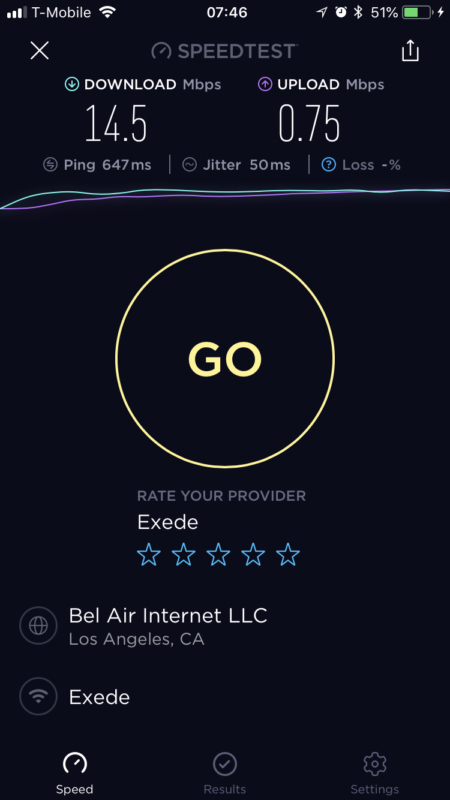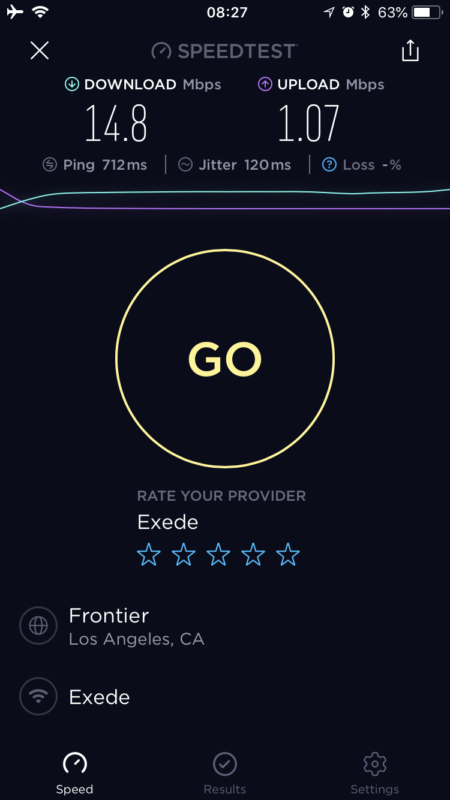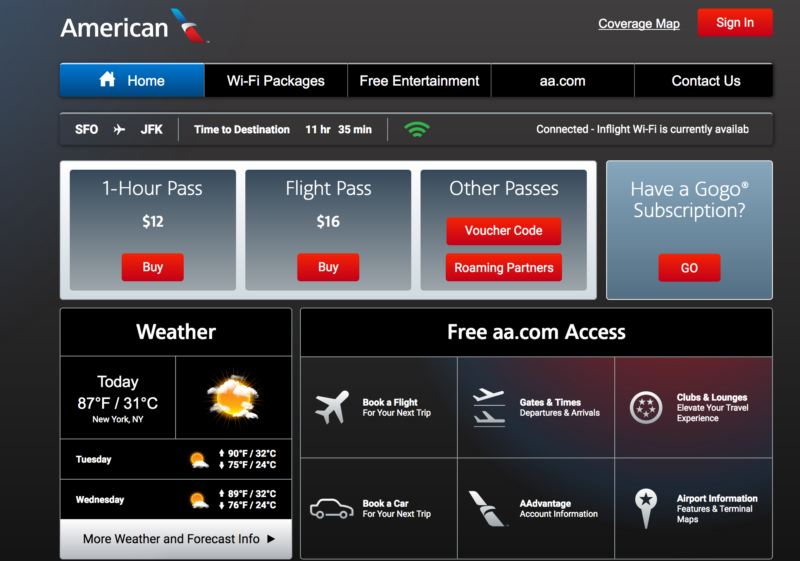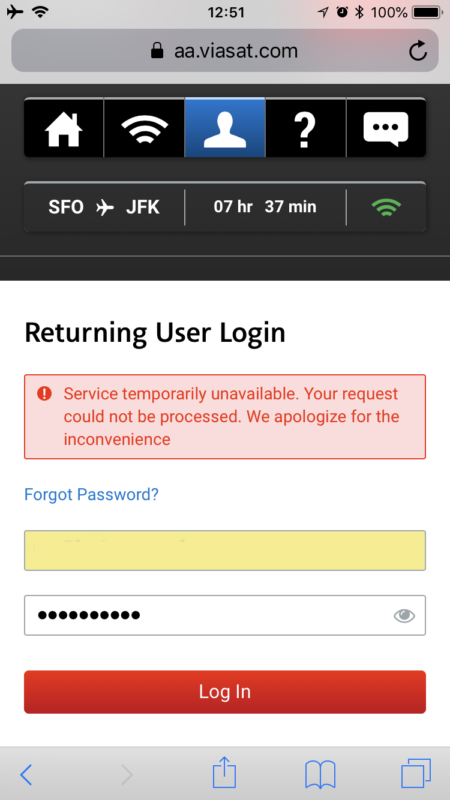Recently, I’ve had some serious time aboard the American Airlines A321T – the transcontinental planes that are used between New York to San Francisco and Los Angeles.
Both of the planes I flew on featured the ViaSat on-board WiFi system (compared to the Gogo or Panasonic Systems installed already on board some of the American Airlines fleet).
So how does it stack up?
Coverage
ViaSAT released a map with the coverage their service offers. It uses Ka Based Satellite communication.

Although Spring 2018 is a lovely ideal isn’t it? – Map – ViaSat via the American Airlines portal
So at the moment, it covers mostly the USA – and the transcontinental route – which is good to say the least.
Pricing
Let’s get to the crux of things – how much this is going to cost.If you’re buying in-flight, it’s US$12 for 2 hours, or US$16 for a full flight. For those with GoGo passes – you can roam with this. There is also roaming support too
Good luck – as I don’t have a peering account with Gogo, I could not test this.
Speed
So the first question I’m asked is this: show me the megabits. I did various measurements over two sessions (from JFK-SFO, SFO-JFK). I l was hitting around 14mbs download speeds with no problems.

JFK-SFO (I only did one test sadly – my body wanted sleep instead of Wi-Fi).
I did some more extensive testing between SFO-JFK, with varying results:

Whilst on the ground (ViaSat Wi-Fi is available gate to gate).

During climb-out from San Francisco.
On the laptop
Actual use and feel
Whilst Speedtests are nice and theoretical, how did it work in the real world? Well I tried a Hyperlaspe which went to Twitter and Instagram. The upload wasn’t exactly fast, but quite passable.
Working on a blog post was reasonable enough at 35,000ft – with both images and text entry via WordPress working pretty well. So well, I wrote a snapshot in the air about another airline (very meta indeed). I did make some changes to allow content to be uploaded, by ensuring the images were scaled to a different resolution than I normally use
Using Youtube was a fluid experience, with content being delivered in various qualities – put it like this, it was stable enough to watch content through. Sadly, as I don’t have a Netflix account, I couldn’t test this in the air.
Roaming from device to device worked well, with me about to switch from a phone to a laptop.
Issues encountered
I encountered no issues on the way out, but on the way back – I got an odd message, which meant I couldn’t log back onto the phone.
Whilst it was for the last hour of the flight, it was annoying for a gate to gate test.
Impressions
From the two times I’ve used it, the ViaSat Wireless service, it seems to offer a reasonable value service for $16 per flight (around £12) for trans-con connectivity (5 hour upward flights). The speed appears stable at 14mb (and probably capped) so that everyone can get reasonable speed Wi-Fi coverage through the plane.
For those looking for connectivity on-board their planes, it could be a good thing to see.
ViaSat connectivity is available on the American Airlines Boeing 737 MAX 8 and is being installed on their Boeing 737-800 and Airbus A321 fleets.
For those used to using Air-To-Ground solutions, it’s a major step forward in terms of connectivity. For those used to Satalite based connectivity – it’s an improvement on some Ku based solutions out there in terms of raw speed (compared to the experiences of Panasonic In-flight WiFi I’ve had).
Certainly if you’ve got a long enough flight segment – its an easy purchase if you want to be connected.
Welcome to Economy Class and Beyond – Your no-nonsense guide to network news, honest reviews, with in-depth coverage, unique research as well as the humour and madness as I only know how to deliver.
Follow me on Twitter at @EconomyBeyond for the latest updates! You can also follow me on Instagram too!
Also remember that as well as being part of BoardingArea, we’re also part of BoardingArea.eu, delivering frequent flyer news, miles and points to European readers



Will those with T-Mobile still have the free text and data with this new system ?
It didn’t take my GoGo passes. I’d like to hear if others experienced differently.
Really?
Trying to stream data when they specifically request that you do not do so?
There is a reason for this – very limited satellite bandwidth makes it a scarce resource – and by attempting to abuse the system you may be affecting others who are trying to get real work done!
It is a shared resource – and should be respected as such..